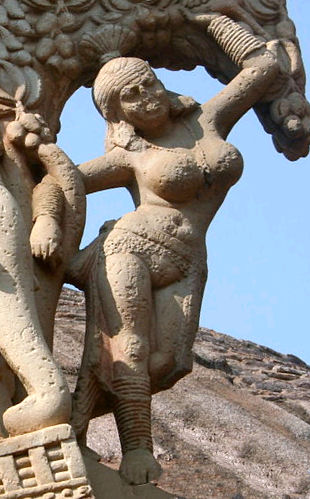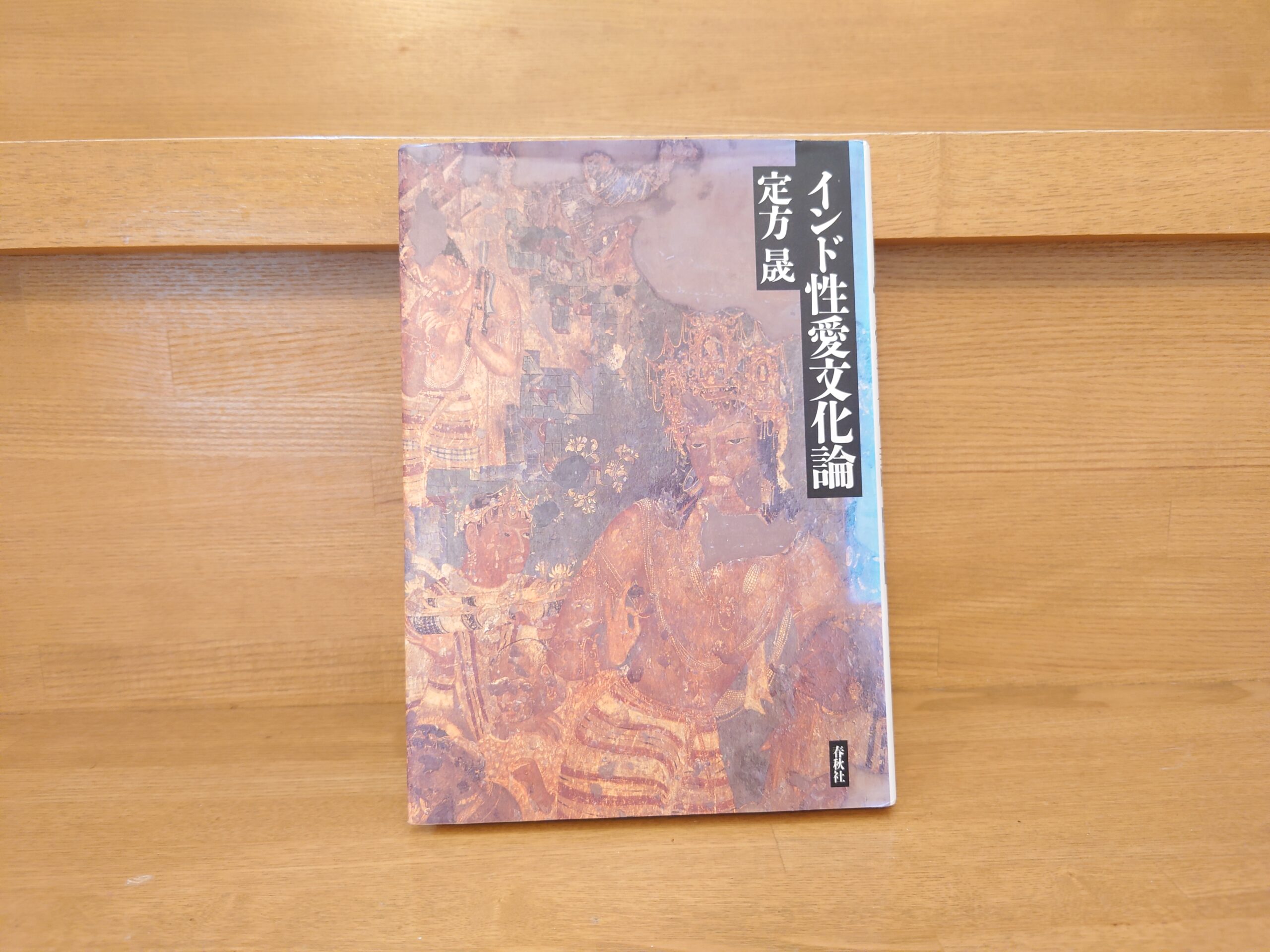Sadakata Chen, "Indian Sexual Culture Theory" Summary and Comments - Sexuality as taught in Buddhist scriptures. A reference book that gives a different perspective on Buddhism.
I would like to introduce a book titled "A Theory of Indian Sexual Culture" by Sadakata Chen, published by Shunju-sha in 1992.
Let's take a quick look at the book.
Buddhism is considered to be rigid and serious. However, it is not impossible to find erotic, gross, and sadistic elements in the vast literature. This is a good essay on the allure of erotic women and the fascination of sex that rises from Indian Buddhist scriptures.
AmazonProducts Page.

This book is a straightforward discussion of the relationship between Buddhism and sex, something we are not usually exposed to.
Buddhism may be associated with asceticism and asceticism, but conversely, that is how much the "issue of sex" was regarded as a major problem. At the beginning of this book, the author says the following about "the relationship between Buddhism and sex" and this book. This is a bit long, but it is an important part of the book, so I will read it carefully.
Buddhism is considered to be rigid and serious. However, it is not impossible to find erotic, gross, and sadistic elements in the vast Buddhist literature.
The Isinga story is representative of the erotic. The story is told of a princess who, in an attempt to corrupt a young ascetic who had never known a woman, was fortunate that he saw her vulva and mistook it for a wound, and tricked her into believing that she had been bitten off by a bear and her claws had ripped open the wound, and that the only way to heal it was to cover the wound with his own penis. (See "The Icchaku Hermit Who Bears Women" in this book.)
An example of the grotesque is the view of impurity. The view of impurity refers to the observation and understanding of the impurity of the body in order to break one's attachment to it. The body can be one's own or someone else's, but it is especially a woman's body. Seeing rotting corpses in cemeteries is another way of observing impurity.
To those who say that a corpse is impure, but a living body is not, I encourage them to recall that under a single layer of skin is a puddle of filth. Think of flesh, muscle, bone, marrow, kidney, heart, liver, ribs, spleen, lungs, lung viscera, mesentery, stomach, excrement, bile, phlegm, thick juice, blood, fat, tears, blood commands, spit, nasal fluid, joint synovial fluid, urine, brain, etc. (Kuddhakapatha). In Zen Buddhism, the body is nothing more than a "dung bag" (Thera Gatha, 1151; see also Thera Gatha, 466).
An example of sadism can be found in the depiction of hell.black ropeThere is a hell called hell. The prison guard draws lines on the body of a sinner with an inked thread and cuts the body according to the lines.dirt that gathers under the corpse of a deceased personIn hell, the sinner is thrown into a quagmire consisting of corpses and feces. The sinner is pierced to the bone and sucked to the marrow by the maggots. (omitted).
The above sutras were not, of course, preached for the purpose of eroticism, grossness, or sadness. They were preached to prevent people from becoming corrupt. The Isinga story teaches the dangers of female sexuality, the view of impurity teaches overcoming carnal desires, and the description of hell teaches avoiding the evil way.
However, people today probably do not read Buddhist scriptures in such a straightforward manner. Rather, they would secretly enjoy the eroticism, grotesqueness, and sadness. It is likely that some of the sutra authors and monks of the past had such tendencies. In the sutras themselves, examples of unintended and wicked readings appear. (The following is a brief summary of the text.)
Let's focus on eroticism in Buddhist scriptures. Buddhism appears to be indifferent to sexuality. But that is only on the surface; repressed sexuality lurks beneath the surface. Buddhism's emphasis on overcoming sexual desire must presuppose such great concern for it.
The organism's instincts are appetite and sexual desire. Organisms follow these instincts honestly and without shame, but humans have come to be ashamed of them and deny them. Why is this? I can think of two reasons. One is that man has developed a self-esteem that says he should be different from other creatures. Second, we have learned that desire is the cause of suffering.
This is the starting point of Buddhism. The fact that Buddha found abominations in the sleeping forms of his wives and concubines would indicate that he was a proud man. The idea of purity is found in Brahmanism, but it is also prevalent in Buddhism. Buddhism also aims at overcoming suffering. The causes of suffering arecoveting(Devouring)dosa (ill will, antipathy)(anchor)moha (ignorance, folly)(Consider the "three poisons" (ignorance). Of the "three poisons," greed is probably the most powerful. This is because it is the instinct to live.
The representatives of greed are appetite and sexual desire. Appetite cannot be ignored by any religious person. However, sexual desire can be suppressed with effort. It is quite understandable why human beings focus their training energies on overcoming their sexual desires in order to gain proof of their humanity. The original word for greed is the Sanskrit word raga (passion, lust), which indicates that an important Buddhist concern was overcoming sexual desire.
I am now trying to show the back roads of Buddhism. Some Buddhist scholars may not like this. However, what can we understand about Buddhism if we avoid the issue of sexuality, which is very important for human beings? In India, sexual love (karma) is one of the three major goals of life. I believe that the significance of Buddhism can be properly understood only when all aspects of human beings are known.
Shunju-sha, Sadakata Chen, Indian Sexual Culture, p. 1-6.
I am now trying to show the back roads of Buddhism. Some Buddhist scholars may not like this. But what can we understand about Buddhism if we avoid the issue of sexuality, which is very important for human beings? In India, sexual love (karma) is one of the three major goals of life. I believe that the significance of Buddhism can be properly understood only when all aspects of human beings are known."
I think this last word is a very important recommendation.
It is true that even in the early days of Indian Buddhism, "sex" was discussed as above, but as time went by, Hinduism, especially Tantrism, was incorporated into the religion and it became more esoteric, bringing sexuality and Buddhism closer together. Some doctrines even become one with itself.
What can we understand about Buddhism if we avoid the issue of sexuality, which is so important for human beings?I found the author's words to be very heavy-handed: "I am very happy to be here. This was an inspiring book. Why not pick up a copy?
The above is "Sadakata Chen's "Indian Sexual Culture Theory" - Sexuality as Teached in Buddhist Scriptures. A Reference Book that Truly Inquires into the Relationship between Buddhism and Sexuality".
Next Article.
Click here to read the previous article.
Related Articles





































